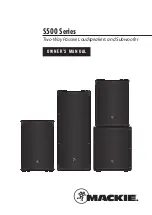
IMA 551C
500AS
Page 9
5.
After boost charge, check the level of electrolyte in all cells.
Add additional electrolyte to bring the level to that shown on
the labelling. DO NOT OVERFILL. Once the battery has
been in service, add only approved water. DO NOT ADD
ACID.
NB. Depending on the age of the dry battery, correct
activation may take up to 48 hours.
6.
Disconnect the battery from the charging source and refit
the vent plugs ensuring they are screwed or pushed all the
way home.
7.
Wash away any spilt electrolyte with water and dry the
battery completely before installing it into the machine.
INSTALLATION
1.
Inspect the battery tray and remove any foreign objects that
may be present.
2.
Place the battery in the tray.
3.
Connect the positive battery lead (marked with a red band),
then connect the negative lead.
NB - Always connect the negative lead last when installing
a battery and disconnect it first when removing the battery
from the machine.
4.
Refit the battery hold-down assembly. Do not over-tighten
this assembly as battery case damage is possible.
BATTERY MAINTENANCE PROCEDURE
1.
Keep the electrolyte levels about 6mm above the plates
and separators.
2.
Keep terminal posts free of corrosion.
3.
Keep battery clean and dry.
4.
Do not leave machine switched on without the engine
running as this will discharge the battery.
5.
Do not fast charge any battery over 18 months old.
6.
Never add acid to a battery unless replacing acid lost
through spillage.
GROUND TEST PROCEDURE
Note: Alternator model 500AS have been manufacturered since
the late 1970’s. There have been many variations to the
‘standard’ manufactured machine. This procedure is for the
‘machines as built’ many modifications could have taken place
over the life of a particular machine, so details of this procedure
may need to be ‘adjusted’ to suit these modifications.
For prompt service contact your local authorised Lincoln Field
Service Shop.
The insulation resistance values listed below are from Australian
Standard AS1966.2.
1.
Ensure engine is stopped.
2.
Remove welding leads and disconnect any auxiliary
equipment cables.
3.
Disconnect the negative and positive battery leads.
4.
Disconnect the leads from the battery charge alternator
(mounted on the engine, if fitted).
5.
Remove leads from battery charger PCB and connect them
together (mounted on rear of control panel, if fitted).
6.
Jumper the volt (or amp) meter terminals together, also
jumper together the hour meter terminals (if fitted).
7.
Remove the earth leads from:- (in all cases where fitted)
The bridge rectifier (mounted on the brush holder
bracket).
The water temperature gauge and sender.
The voltmeter.
The stop solenoid (mounted in the engine fuel injector
pump on “key stop” machines).
The hour meter and engine watcher warning light.
The RCD.
8.
Set the current control (reactor) and the voltage rheostat to
maximum, also switch the reversing switch to “electrode
positive” position.
9.
Place the key switch and start/run switch (if fitted) in the
“run” position.
10.
The aux. switch to the “on” position.
11.
Remove thermostat lead from terminal No. 5 on the key
switch (if fitted).
12.
Jumper together the positive, negative and both AC
terminals of the two bridge rectifiers (one mounted on the
rear of the control panel and the other is mounted on the
brush holder bracket) (if fitted) or jumper the two diodes on
the capacitor assembly (if fitted).
13.
Field Circuit Test: Connect one lead of the mega tester to
the frame of the machine and the other lead to one of the
slip ring brush pig tails. Apply the test. (Min. resistance
1M
Ω
)
14.
Auxiliary Circuit Test: Connect one lead of the mega tester
to the frame of the machine and the other lead to the
‘active’ terminal to one of the 240V aux. outlets. Apply the
test. (Min. resistance 1M
Ω
)
15.
Welding Circuit Test: Connect one lead of the mega tester
to the frame of the machine and the other lead to the
positive output stud. Apply the test. (Min. resistance 1M
Ω
)
16.
Aux. to Weld Circuit Test: Connect one lead of the mega
tester to the ‘active’ terminal of one of the 240V aux. outlets
and the other to the positive output stud. Apply the test.
(Min. resistance 10M
Ω
)
17.
Aux. to Field Circuit Test: Connect one lead of the mega
tester to the ‘active’ terminal of one of the 240V aux. outlets
and the other to one of the slip ring brush pig tails. Apply
the test. (Min. resistance 1M
Ω
)
18.
Weld to Field Circuit Test: Connect one lead of the mega
tester to the positive output stud and the other lead to one
of the slip ring brush pig tails. Apply the test. (Min.
resistance 1M
Ω
)
19.
Remove all jumper leads. Reconnect all leads
disconnected during this procedure.
If any problems are encountered refer to your nearest authorised
Lincoln Field Service Shop.
This procedure is only suitable for applications using DC
mega testers up to 500V.
WARNING
Содержание SHIELD-ARC 500AS
Страница 19: ......







































